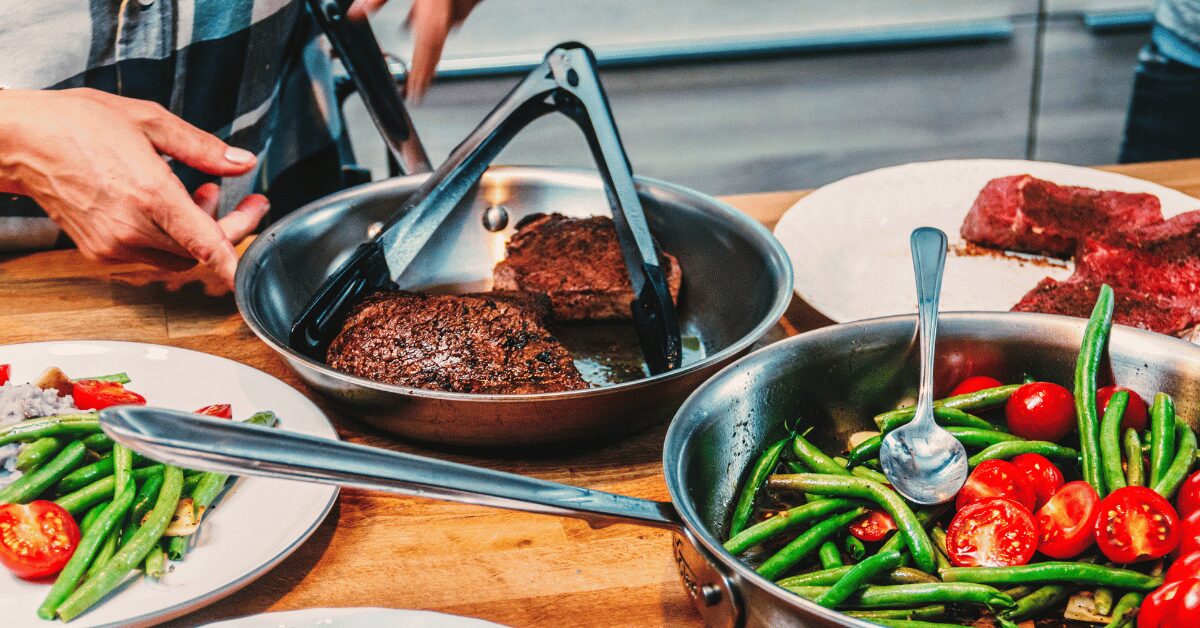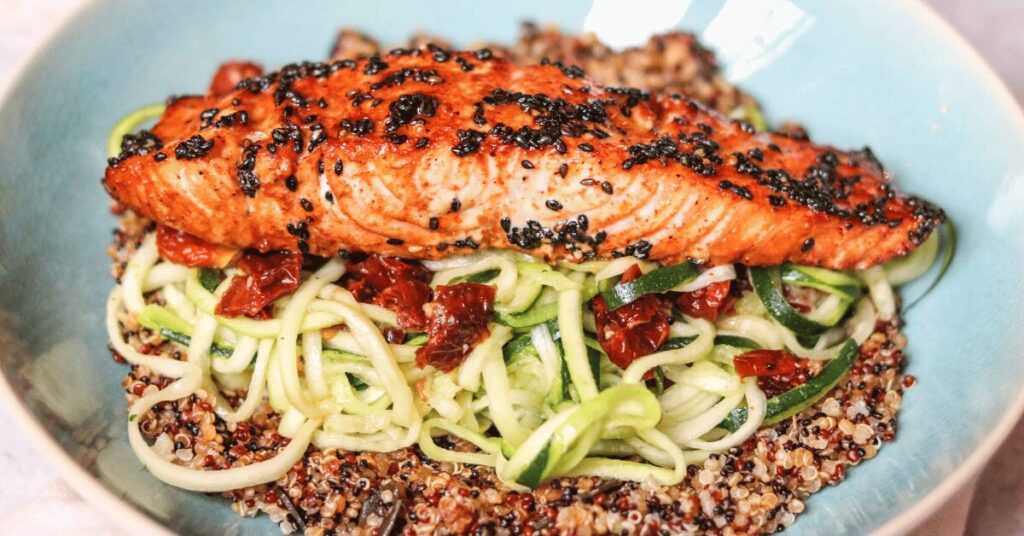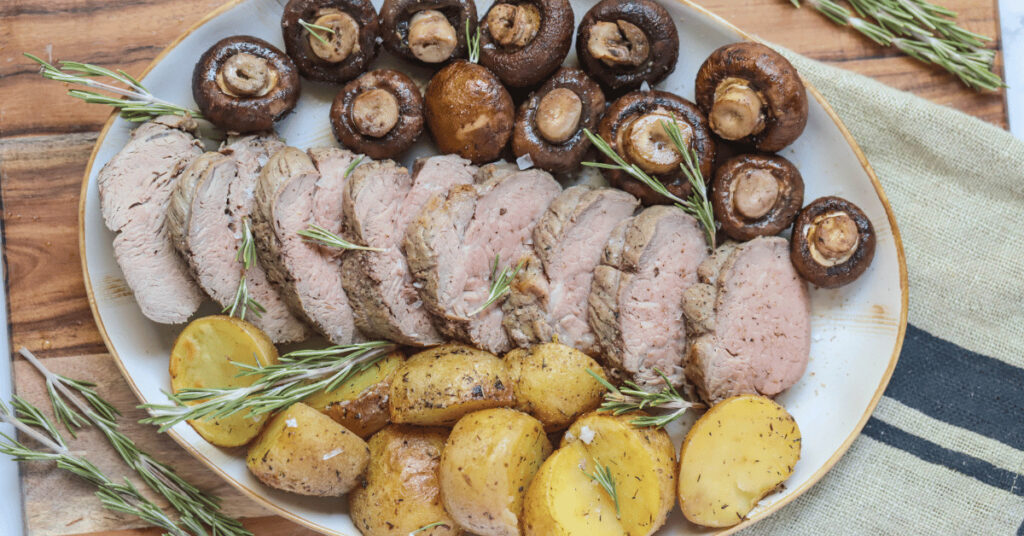
Protein isn’t just about muscle — it’s about metabolism, mood, hormones, detox, and resilience.
In the world of functional medicine, we think of protein as a messenger molecule: it builds, signals, and restores.
So if you’ve ever asked yourself:
“Why am I so tired after lunch?”
“Why can’t I kick my cravings?”
“Why do I feel strong some days and foggy others?”
…your protein rhythm might be the missing link.
Let’s explore seven simple ways to weave more protein into your life — habits that feel grounded, nourishing, and doable.
1. Anchor Every Meal with Protein
Before every meal, ask:
“What’s my protein here?”
That question alone brings you out of autopilot and into intention. Maybe it’s eggs with greens, wild salmon with roasted veggies, or lentils tossed into a salad. When protein leads, balance follows — blood sugar steadies, energy sustains, and mood lifts.
Functional Tip: Even distribution of protein (around 25–35g per meal) supports your cortisol rhythm and helps you maintain metabolic flexibility.
Recipes From Our Kitchen

2. Start the Day with Purposeful Protein
Your breakfast is your hormonal reset button.
Skipping or skimping on protein early in the day can trigger cravings and energy dips later. Instead, anchor your morning with a protein-forward meal like:
- A veggie-packed omelet with avocado
- Chia pudding with collagen and berries
- A smoothie with greens, clean protein, and adaptogens
Functional Tip: Aim for 25–30g of protein within 90 minutes of waking to stabilize blood sugar and support neurotransmitter balance.
Recipes From Our Kitchen

3. Batch Cook for Calm
Life doesn’t slow down — and that’s okay. Batch cooking gives you nutritional calm in the chaos.
Spend an hour prepping chicken, lentils or quinoa so your fridge feels like a wellness toolkit. When dinner time hits, assembly is effortless.
Functional Tip: Rotate your protein sources weekly to cover your amino acid bases and keep your microbiome happy.
Recipes From Our Kitchen

4. Snack Smart, Not Reactive
The right snack isn’t a crutch — it’s a strategy.
Keep easy, protein-rich options on hand: boiled eggs, hummus and veggies, jerky, or nuts.
These small but intentional choices help buffer stress and prevent the “hangry crash.”
Functional Tip: Protein-rich snacks stabilize cortisol and help your body shift from reactive to resilient.
Recipes From Our Kitchen

5. Diversify Your Plant-Based Proteins
Even if you eat animal protein, plant-based sources bring unique benefits.
Lentils, chickpeas, and hemp, each support gut health, detox, and nutrient diversity.
Functional Tip: Rotating plant proteins nourishes a diverse microbiome and supports detoxification pathways (especially methylation and phase II liver function).
Recipes From Our Kitchen

6. Boost with Protein-Rich Beverages
For busy mornings or post-workout recovery, protein powders or high-protein milks can be your functional fallback.
Choose products that are clean, minimally processed, and digestively friendly.
Functional Tip: Add nutrient boosters — maca, medicinal mushrooms, or greens — to enhance adaptogenic and mitochondrial support.
Recipes From Our Kitchen

7. Track and Tune — Because You’re Unique
No two bodies are the same.
Track your protein for a week — not to micromanage, but to observe patterns.
Notice how your body responds when you eat more consistently.
Functional Tip: Most adults thrive around 0.55–0.8 grams of protein per pound of body weight per day (that’s equivalent to 1.2–1.8 g/kg).
For example:
- A 150-lb person may do well with 80–120 grams of protein per day
- A 180-lb person might need 100–145 grams per day, especially if active or rebuilding muscle
Your individual needs shift with stress levels, hormones, training, and recovery — so use these numbers as a starting point, not a rule.
Closing: Let Protein Serve You
Think of protein as a daily act of nourishment, not another task.
By weaving in these habits — thoughtful meals, prepped proteins, smart snacks, and mindful variety — you’re building capacity.
And in functional medicine, capacity is the opposite of collapse.
It’s how your body holds space for energy, calm, and vitality — every single day.
Reflect & Reset
Ask yourself:
- Where in my day do I tend to skip or skimp on protein?
- What’s one simple habit I can begin this week to support my energy?
Start small. Stay curious. Your body is always talking — and protein is one of its favorite languages.
Ready to Level Up Your Nutrition?
If this post resonated — and you’re craving real food freedom — join us for the upcoming WILDFIT Food Freedom Challenge here.
This is where knowledge meets transformation. Over a few short weeks, you’ll discover how to reset your relationship with food, understand your body’s true signals, and reclaim your natural energy — with support, structure, and community.
✨ Classes start soon! Don’t miss your chance to join.
👉 Join the WILDFIT Food Freedom Challenge here »







